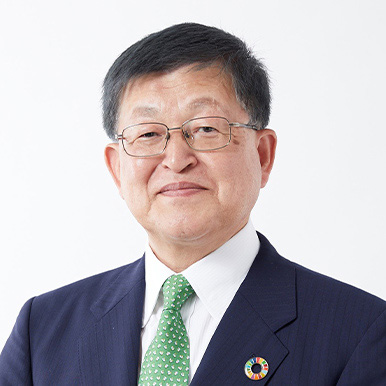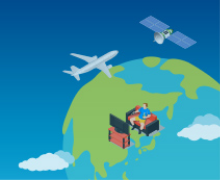- Sustainability
- Materiality
- Expert Opinions
FY2020: Expert Opinions (On the Identification of Materiality Themes)
From the Perspective of CSV Based on the SDGs
March 25, 2021
Profile
 CSR/SDGs Consultant
CSR/SDGs Consultant
Professor, Chiba University of
Commerce
PhD in Policy Studies
Mr. Hidemitsu Sasaya
Director of Sustainability Forum Japan, Director of Japan Society
for Business Ethics, Director of Society of Global Business.
Graduated from
Faculty of Law, the University of Tokyo. Joined Japan’s Ministry of
Agriculture and Forestry (currently Ministry of Agriculture, Forestry and
Fisheries, MAFF) in 1977. Served as Deputy Director-General for the Ministry of
the Environment, Deputy Director-General for MAFF, and Bureau Chief of the Kanto
Regional Forest Office. In 2008, retired from his career as a bureaucrat and
joined ITO EN, LTD. Promoted CSR and the SDGs of ITO EN in his capacity as a
board member and managing executive officer until 2019. From April 2020, has
served as Professor at the Chiba University of Commerce, Platform for Arts and
Science. Holds a PhD in policy studies.
Set the pace as an SDG platform provider to enhance corporate value
The 22 materialities and 9 materiality themes identified by the SKY Perfect JSAT Group are organized in light of the 169 targets of the SDGs, seven core subjects of ISO26000, and ESG, using the ESG/SDGs matrix I advocate. They are well presented so that they are easily understood in the international community and by overseas investors.
When identifying materialities, unlike CSR, non-financial aspects should not be overly emphasized. Investors are interested in whether resolution of a certain issue will lead to sustainable strengthening of the company’s business. For example, “building resilient broadcasting and communications infrastructure, eliminating information gaps” is an excellent materiality theme but investors will also check your cost and investment plans. Integrated thinking requires synchronization of financial and non-financial aspects. In other words, it is the practice of creating shared value (CSV), that is, to aim to achieve both resolution of a social issue and generation of profit. The SKY Perfect JSAT Group should be aware of these perspectives when reporting on its SDG-related activities.
“Building resilient broadcasting and communications infrastructure, eliminating information gaps,” “contributing to the environment to make a decarbonized society and circular economy a reality,” and “promoting innovation which contributes to the environment and society” are positioned as materiality themes common to both the Media Business and the Space Business. I find these themes to be very appealing. I strongly suggest that the SKY Perfect JSAT Group promotes its initiatives for these themes as an “SDG platform provider.” When a leading media platform provider such as the SKY Perfect JSAT Group becomes SDG-oriented, it will have a tremendous rippling effect. The SDGs are a universal language that can act as a powerful magnet attracting companies, causing them to embrace the SDGs, creating a high possibility of innovation leading to excellent SDG-related content. The SDGs are effective for making the social and environmental issues to be addressed objective. It is noteworthy that the SKY Perfect JSAT Group used the SDGs in its materiality identification process. Coupled with the high recognition of the SDGs, the materialities identified by the Group are expected to be appealing globally when publicized.
In the next phase following the identification of materialities, two axes will be important: the time axis and the partner axis.
With regard to the time axis, it is first necessary to set an ambitious goal for 2030, the target year of the SDGs, and then to consider specific actions to be taken now by backcasting from 2030. Stakeholders are interested in a medium- to long-term roadmap for realization of the goal for 2030. So, the process the Group used in materiality identification will also be useful in responding to stakeholders’ inquiries about the roadmap.
The second axis is the partnership axis. Innovation is required for achieving the ambitious goal set by backcasting. However, since there is a limit to what the SKY Perfect JSAT Group can achieve alone in dealing with complicated issues, partners are essential. This is also true for other companies. That is why SDG Goal 9 “Build resilient infrastructure, promote inclusive and sustainable industrialization and foster innovation” and SDG Goal 17 “Strengthen the means of implementation and revitalize the global partnership for sustainable development” are relevant in light of the characteristics of the Space Business and the Media Business. Utilizing the Group’s satellite infrastructure and data, the SKY Perfect JSAT Group can support other companies’ renewables initiatives, which will lead to SDG Goal 7 “Ensure access to affordable, reliable, sustainable and modern energy for all.” Among the Group’s materiality issues, “support reduction of CO2 emissions via satellite services” and “development and promotion of remote sensing,” which has great potential for achieving many SDGs, will be welcomed by other companies that are accelerating their initiatives toward carbon neutrality in relation to SDG Goal 13 “Take urgent action to combat climate change and its impacts.” Partnerships will be beneficial for the SKY Perfect JSAT Group, too.
CSV aims at innovation through partnerships in new markets and businesses and the achievement of competitive advantage. This will open up a path toward sustainable enhancement of corporate value.
*The Group’s materiality table is organized based on the ESG/SDGs matrix under the supervision of Mr. Hidemitsu Sasaya.
Other expert third-party opinions and dialogues
FY2023
- Dialogue with Expert (Overall Sustainability)
- Dialogue with Expert (Environment)
- Dialogue with Expert (Human Capital)




